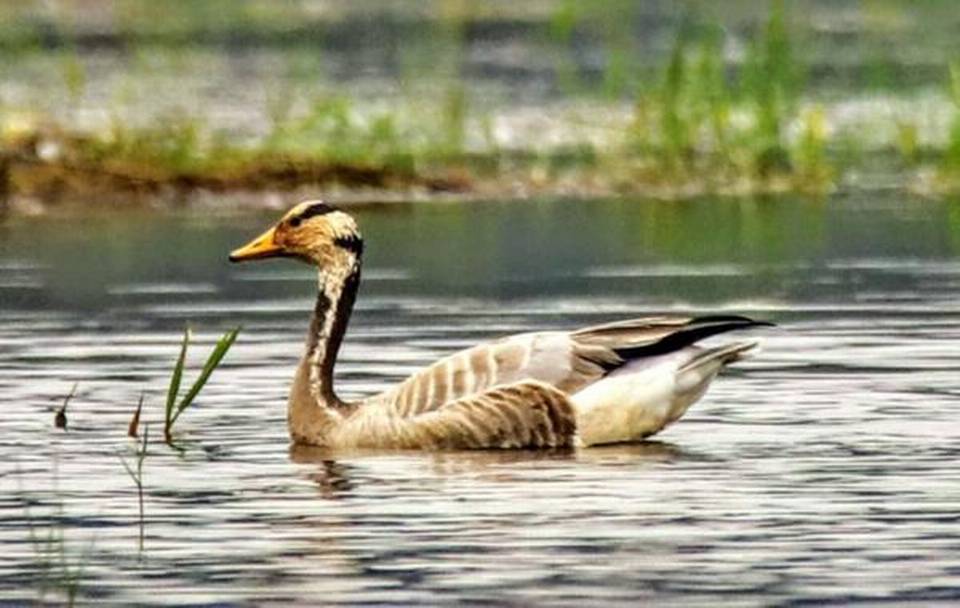Bar-headed Goose Spotted in Kerala | 26 Dec 2019
Why in News
A Bar-headed Goose has been spotted in the wetlands of Karingali Puncha in Pathanamthitta District of Kerala.
- In general, large flocks visit the Koonthankulam bird sanctuary at Tirunelveli in Tamil Nadu. It is very rare that the bird is spotted in Kerala.
- The wetlands of Karingali Puncha is a major birding spot in the district. It reported the highest bird count in the Asian Waterbird Census of 2015.
Bar-headed Goose
- Scientific Name: Anser Indicus
- Habitat
- Bar-headed geese are found in central China and Mongolia and they breed there.
- They start migration to the Indian sub-continent during the winter and stay till the end of the season.
- Special Feature
- They are one of the birds which can fly even at very high altitude. They come to India and return to their homes by crossing the Himalayan ranges - one of the most high-altitude migrations in the world.
- The capacity of bar-headed geese to transport and consume oxygen at high rates in hypoxia distinguishes this species from similar lowland waterfowl.
- IUCN Status: Least Concern
Note
Hypoxia: It is a condition of the body in which the tissues are starved of oxygen.
Asian Waterbird Census
- Every January, thousands of volunteers across Asia and Australasia visit wetlands in their country and count waterbirds. This citizen science programme is the Asian Waterbird Census (AWC).
- The AWC was initiated in 1987 in the Indian subcontinent. The census covers the entire East Asian – Australasian Flyway and a large part of the Central Asian Flyway.
- The main objective is to obtain annual information of waterbird populations at wetlands in the region, the status of wetlands, and encourage interest in waterbirds and wetlands among the public and thereby promote conservation.
- The AWC is an integral part of the global waterbird monitoring programme, the International Waterbird Census (IWC), coordinated by Wetlands International.
Koonthankulam Bird Sanctuary
- Situated in Tamil Nadu, it was declared as a sanctuary in 1994.
- It is an important protected area known for the congregation of migratory and local water birds – the grey pelican, the painted stork, the greater flamingo, the bar-headed goose, the open bill stork, the black ibis and other common species like egrets, cormorants and herons, among others.
